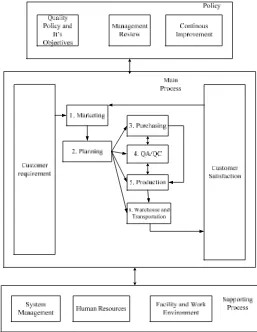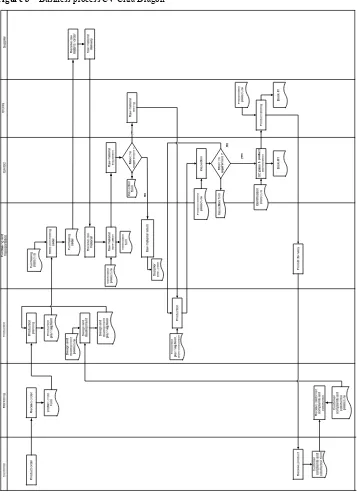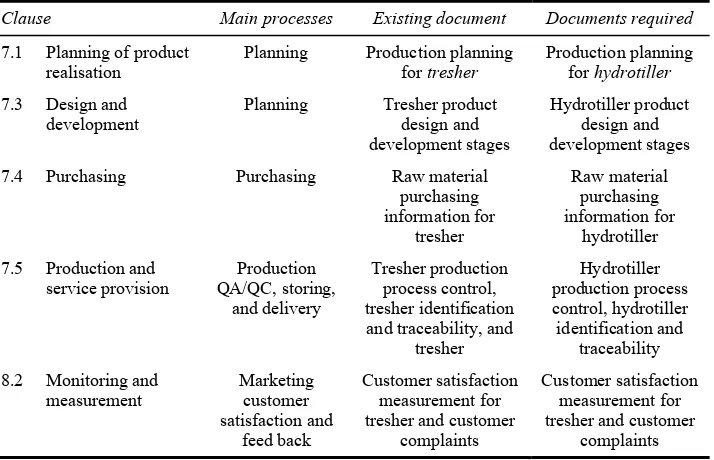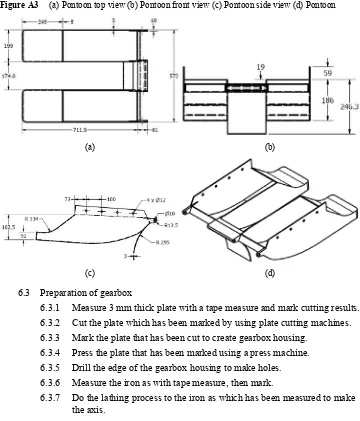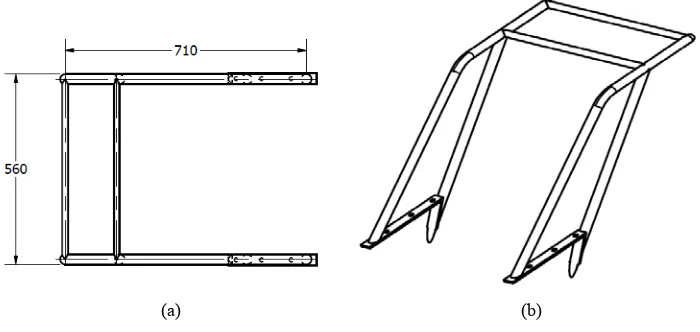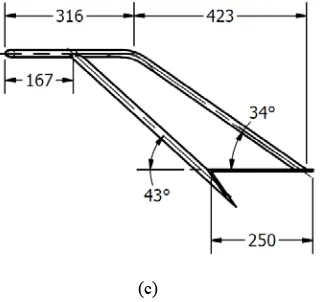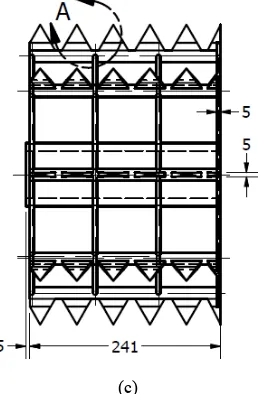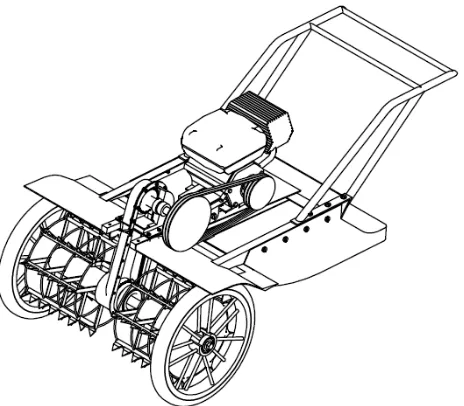3/5/2017 International Journal of Productivity and Quality Management (IJPQM) - Inderscience Publishers
http://www.inderscience.com/info/inarticletoc.php?jcode=ijpqm&year=2016&vol=19&issue=1 1/1 Help Sitemap
LOG IN
For Authors, Editors, Board Members
Username
International Journal of Productivity and
Quality Management
2016 Vol. 19 No. 1
Pages Title and authors
1-20 Use of quality management tools to analyse delivery exceptions in the motor carrier industry: a case study Ike C. Ehie; Debra L. Gilliland
DOI: 10.1504/IJPQM.2016.078006
21-37 Scope creep: implications on customer satisfaction index in software industry
K. Lakshmi Madhuri; Jawahar J. Rao; Suma Vasudeva Murthy
DOI: 10.1504/IJPQM.2016.078007
38-50 Relationship between service quality and customer satisfaction: a study of Malaysian banking industry Lay Hong Tan; Boon Cheong Chew; Syaiful Rizal Hamid
DOI: 10.1504/IJPQM.2016.078008
51-73 Examining the role of inventory in business enterprises: is there a paradigm shift?
Khaled Elsayed
DOI: 10.1504/IJPQM.2016.078010
74-97 The integration of maintenance plans and production scheduling for a degradable multi-state system: a literature review
Ghita Ettaye; Abdellah El Barkany; Ahmed El Khalfi
DOI: 10.1504/IJPQM.2016.078017
98-115 A critical analysis of information technology and businessprocess reengineering Hari Lal Bhaskar
DOI: 10.1504/IJPQM.2016.078018
116-138 Design of quality system documentation in hydrotillerproduction unit as improvement of quality management system in small and medium enterprise
Nilda Tri Putri; Frastia Retha; Sha'ri Mohd Yusof
DOI: 10.1504/IJPQM.2016.078019
Sign up for new issue alerts Subscribe/buy articles/issues View all calls for papers Recommend to a librarian Feedback to Editor
Find related journals
Find articles and other searches
Keep up-to-date
Our BlogFollow us on Twitter Visit us on Facebook Join us on Google+
Our Newsletter (subscribe for free)
RSS Feeds New issue alerts
Article search Go
Home > International Journal of Productiv ity and Quality Management > 2016 Vol. 19 No. 1
Contact us | About Inderscience | OAI Repository | Privacy and Cookies Statement | Terms and Conditions | © 2017 Inderscience Enterprises Ltd.
Remember me Forgotten?
Design of quality system documentation in
hydrotiller production unit as improvement of quality
management system in small and medium enterprise
Nilda Tri Putri* and Frastia Retha
Department of Industrial Engineering, Faculty of Engineering,
Department of Manufacturing and Industrial Engineering, Faculty of Mechanical Engineering,
Universiti Teknologi Malaysia, Malaysia Email: [email protected]
Abstract: CV Citra Dragon is one of small and medium industries producing equipment and agricultural machinery (also known as Alsintan) in West Sumatra, Indonesia. The company needs to implement a quality management system (QMS) to win the competition as a result of globalisation. QMS applied in that company is still limited to a single product that is rice thresher machine (thresher). Therefore, the scope of the QMS in the company needs to be extended to other products that are hydro tiller which is one of the two main products produced by it. The existence of a well-documented quality system is important for a company in implementing QMS. Therefore, it is necessary to design a quality system documents on the company related to hydro tiller production process. It is based on the ISO 9001: 2008. Quality systems documents are required and made in the study include three levels of documentation, the procedures, work instruction, and form.
Keywords: quality management systems; QMSs, ISO 9001: 2008; procedures; work instructions; forms; small and medium enterprises; SMEs.
Reference to this paper should be made as follows: Putri, N.T., Retha, F. and Yusof, S.M. (2016) ‘Design of quality system documentation in hydrotiller production unit as improvement of quality management system in small and medium enterprise’, Int. J. Productivity and Quality Management, Vol. 19,
No. 1, pp.116–138.
Design of quality system documentation in hydrotiller production unit 117
Frastia Retha earned her BEng from the Department of Industrial Engineering, Faculty of Engineering, Andalas University, Padang, Indonesia in 2014.
Sha’ri Mohd Yusof is a Professor at the Department of Manufacturing and Industrial Engineering, Universiti Teknologi Malaysia. He earned his PhD from the University of Birmingham, UK, in 2000. He has published numerous papers in the areas of quality engineering, quality management, robust quality engineering and lean manufacturing. He currently supervises 15 doctoral candidates in these research areas.
1 Introduction
Quality management system (QMS) is a set of documented procedures and standard practices for the management system that aims to ensure compliance with the requirements of the process and the products that have been set. According to Goetsch and Davis (2002),
“a quality management system (QMS) consists of all the organization’s policies, procedures, plans, resources, processes, and delineation of responsibility and authority, all deliberately aimed at achieving product or service quality levels consistent with customer satisfaction and the organization’s objectives. When these policies, procedures, plans, etc. are taken together they define how the organization works and how quality is managed.”
The ISO 9000 standard is the most well-known and widely used method for implementing QMS (Rawahi and Bashir, 2011; Ilkay and Aslan, 2012; Bewoor and Pawar, 2010; Devpura et al., 2014). Devpura et al. (2014) revealed that ISO standard is the most popular quality improvement approach. They conducted an exploratory case study in India’s leading marble mining company. Ilkay and Aslan (2012) believed that it is important to ensure a continuous and standardised approach to the concept quality.
ISO 9000 standards provide a company with well-documented procedures to follow in providing goods and services. In order to guarantee product quality, ISO 9000 can be implemented in any kind of organisation regardless of its size, product, or sector. Casalino et al. (2012) argued that the introduction of suitable standards is considered to be a strategic asset for small and medium enterprises (SMEs). There are some previous researches in relation with the implementation of QMS in SMEs conducted by previous researchers in various countries (Sun and Cheng, 2002; Singh and Singh, 2010; Bewoor and Pawar, 2010; Ashrafi and Bashir, 2011; Ilkay and Aslan, 2012). However, the lack of studies was conducted in this field on SMEs in Indonesia especially in Alsintan
Company.
era of globalisation has a significant role in SMEs to improve competitiveness. By implementing the ISO 9000 QMS, SMEs can provide assurance about the quality consistency as demanded by consumers and can increase efficiency in the production process because it can minimise failure in producing the product (Sinaga, 1998). In addition, the higher level of quality management implementation will affect positively on the financial and non-financial performance (Pandjaitan et al., 2011).
Currently, CV Citra Dragon has implemented a QMS that refers to the requirements in the international standard ISO 9001: 2008 and Indonesian National Standard or also known as Standar Nasional Indonesia (SNI) for products standard. The scope of the
QMS that implemented in Alsintan production process is limited to one type of product,
rice thresher machine type straw thrower (thresher). Since it only focused on one product only, there is a need to extend the QMS to other products that is hydrotiller. Hydrotiller also called tractor turtle is one of the two main products produced by CV Citra Dragon. Only general documents exist for the hydrotiller production, and there are no specific documents related to hydrotiller.
The existence of a well-documented quality document is important for a company or organisation in implementing QMSs. A documented quality system aims to ensure compatibility between the process and the product of the particular needs or requirements. Besides, good quality system documentation can increase customer trust on the consistency of product quality. Recognising the importance of the application of quality management for SMEs to compete with other firms, it is necessary to design a quality system documents for implementing QMS to fulfil SNI certification. The purpose of this study is designing QMS documents, the standard operating procedures (SOPs), work instructions (WIs), and documents for records (form) for Alsintan SMEs to help the
company achieved ISO certification and SNI certification as well.
2 Stages in preparation of quality system document in SMEs
Design of quality system documentation in hydrotiller production unit 119
Figure 1 Stages of preparation quality system document for SMEs
3 Evaluation of initial conditions
CV Citra Dragon has implemented a QMS based on the international standards, ISO 9001: 2008, in carrying out its activities in producing Alsintan. The scopes of the
Processes that exist in CV Citra Dragon consist of the main processes, supporting processes, and policies. There are six main processes, namely marketing, planning, purchasing, quality control (QC) and quality assurance (QA), production, warehouse and shipping/transportation. The activities of marketing process are receiving customer demand, receiving customer complaints, and measuring customer satisfaction. The activity of planning process is to plan production based on demand from consumers. The activities of purchasing process are: make purchasing order, receive raw materials, verify the raw materials, return the raw materials to suppliers if the material does not fulfil the specifications, and supplier evaluation. The activities of QA/QC process are inspections of raw materials, inspection of semi-finished products, inspections of finished product/final, design and development of products, and identification of the product. The activities of production process are establishing design and development stages, producing products, and perform rework on a product that does not meet specifications. The activities of warehouse and delivery process are store raw materials, store the finished product, and product delivery.
Figure 2 Interaction between process CV Citra Dragon
Design of quality system documentation in hydrotiller production unit 121
4 Formulation of requirements document
The required quality documents can be seen in the business process CV Citra Dragon in Figure 3. Based on the business process, it can be seen that the document needs to be prepared for hydrotiller related major processes and fulfilment requirements of the clauses of ISO 9001: 2008 can be seen in Table 1.
Table 1 List of requirements document
Clause Main processes Existing document Documents required
7.1 Planning of product
realisation Planning Production planning for tresher
Production planning for hydrotiller
7.3 Design and
development Planning Tresher product design and
development stages
Hydrotiller product design and development stages
7.4 Purchasing Purchasing Raw material
purchasing 7.5 Production and
service provision QA/QC, storing, Production and delivery 8.2 Monitoring and
measurement Marketing customer
satisfaction and
5 Preparation of documents
5.1 Procedure
The procedures established in this study, are arranged based on the structure and format specified in ISO/TR10013: 2008 guidance in making QMS documentation. The procedures consist of the title, purpose, scope, references, definitions, responsibilities, descriptions of activities and related documents. Naming and numbering the procedure is done by following the rules of naming and numbering of existing procedures such as ‘product realisation procedure’ (PRP) for the procedures relating to the product procurement process, ‘management system procedure’ (MSP) for procedures relating to management activities, and ‘resources procedure’ (RP) for the procedures related to resource management.
ISO clause 2nd level document 3rd level document 4th level document Other document
7.1 Planning of product
realisation - - - Quality plan
Design and development
procedure Hydrotiller design and development form Hydrotiller evaluation and
validation design 7.3 Design and development
Planning and production process procedure
Purchasing of raw material Supplier evaluation form
Purchasing procedure List of supplier
Purchasing order
procedure Production process inspection sheet -
Identification and traceability procedure 7.5 Production and service
provision
Products preservation procedures
-
- Book-01 identification and product delivery
Customer satisfaction
measurement procedures Customer satisfaction measurement form - 8.5 Monitoring and
5.2 Work instruction
WIs are detailed descriptions on how to perform and record the work. WIs were developed from the operational activities and hydrotiller production process. The prepared WIs of hydrotiller state the objectives, scope of work with reference to other related documents, the person in charge, the necessary raw materials, machinery and equipment used, and a description of the process of making hydrotiller. Naming the work is done by following the instructions naming rules of existing WIs, namely, work instructions product realisation (WIRP). The numbering follows the numbering done WIs WIRP manufacture of thresher and add a number 03 to distinguish between thresher and hydrotiller thus become ‘WIRP02.03 manufacture of hydrotiller’. The example of WI that made can be seen in Appendix B.
5.3 Form
Forms were designed to record the results achieved or as evidence to show that an activity in a documented procedure has been executed. Therefore, the naming and numbering recording form refers to the related documented procedures. For example, the procedure ‘PRP 01.02 design and development procedure’ is related to the recording form ‘PRF 01.02.01 planning of hydrotiller design and development’ and ‘PRF 01.02.02 evaluation and validation of hydrotiller design and development’. The example of form that made can be seen in Appendix C. Summary of procedures have been designed in this research can be seen in Table 2.
6 Conclusions
This paper has explained the development of QMS documents for hydrotiller production unit. The QMS documents required in the hydrotiller production unit are for the second, third, and fourth level document including procedure, WI, and form. Preparation of these documents is based on existing requirements in the clause of ISO 9001: 2008 QMS standards as used. Making these documents can help in certification of SNI for hydrotiller. The next stage will involve CV Citra Dragon implementing the QMS document that was developed in this research to expand the scope of their QMS.
Future studies should assess the performance of the QMS implemented in CV Citra Dragon by evaluating the fulfilment of ISO 9001: 2008 requirements with the actual practice. It is hoped that the system will be of great benefit for this medium sized company and for other companies to follow suit.
Acknowledgements
Design of quality system documentation in hydrotiller production unit 125
References
Ashrafi, R. and Bashir, H.A. (2011) ‘Implementation of quality management in organisations operating in the Sultanate of Oman: ISO 9001:2000 vs. non-ISO 9001:2000 certified organisations’, Int. J. of Productivity and Quality Management, Vol. 7, No. 2, pp.183–201.
Bewoor, A.K. and Pawar, M.S. (2010) ‘An empirical study of the motives and benefits of
QMS/ISO implementation among Indian SMEs’, Intl. J. of Productivity and Quality
Management, Vol. 6, No. 3, pp.379–406.
Casalino, N., D’Atri, A. and Braccini, A.M. (2012) ‘A quality management training system concerning ISO standards for sustainable organizational change in SMEs’, Int. J. of Productivity and Quality Management, Vol. 9, No. 1, pp.25–45.
Devpura, M., Reyes, J.A.G., Kumar, V., Lona, L.R. and Meier, H.S. (2014) ‘Exploring the application of quality improvement programmes and ISO standards in the Indian marble mining sector’, Int. J. of Productivity and Quality Management, Vol. 13, No. 3, pp.310–328.
Dwi, C.K.S., Agustina, L. and Carolina, V. (2012) ‘Theoretical study of the quality management system in small and medium enterprises facing the challenges of globalization’, 4th National Seminar and Call for Papers Indonesia Management Forum: ‘Indonesia Family Business Sustainability, Ina Garuda Hotel, Yogyakarta, 13–14 November.
Goetsch, D. and Davis, S. (2002) Understanding and Implementing ISO 9000: 2000, 2nd ed.,
Prentice Hall, Upper Saddle River, New Jersey.
Ilkay, M.S. and Aslan, E. (2012) ‘The effect of the ISO 9001 quality management system on the performance of small and medium enterprise’, Int. J. of Quality and Reliability Management,
Vol. 29, No. 7, pp.753–778.
International Organization for Standardization (2001) ISO/TR 10013, Geneva.
Pandjaitan, L.E., Syamsun, M. and Kadarisman, D. (2011) ‘Study of QMS implementation level on SME’s performance in Nata de Coco Agro-Industry Sector in Bogor’, Small and Medium Enterprises Management, Vol. 6, No. 2, pp.117–124.
Rawahi, A.M.S. and Bashir, H.A. (2011) ‘Investigating the association between organizational differences and the implementation of ISO 9001: 2000’, Proceedings of the 2011 International Conference on Industrial Engineering and Operations Management, Kuala Lumpur, Malaysia,
22–24 January.
Sinaga, F.S.M. (1998) Study of Quality Management System and Food Safety Internship Case in PT
Tri Kunci Mas Industri Palembang, Bogor Institute of Agriculture, Bogor.
Singh, J. and Singh, H. (2010) ‘Assessment of continuous improvement approach in SMEs of Northern India’, Int. J. Productivity and Quality Management, Vol. 5, No. 3, pp.252–268.
Sun, H. and Cheng, T-K. (2002) ‘Comparing reasons, practices, and effect of ISO 9000 certification and TQM implementation in Norwegian small and medium enterprises (SMEs) and large firms’, International Small Business Journal, Vol. 20, No. 4, pp.421–442, Sage
Publications, London.
Appendix A
PRP 01.02 – design and development procedure
1 Objective
2 Scope
This procedure describes the procedures for the design and development of products that includes planning, input, output, review, verification, validation, and control of design and development changes.
3 Reference
3.1 Quality manual.
3.2 ISO 9001:2008 clause 7.3. 4 Definitions
The design and development establish processes that change the requirements set into a certain characteristic to the product specification, or system.
5 Responsibility and authority
5.1 Head of production coordinate the planning design and development process. 5.2 QA/QC staff defines and control the design and development stages.
6 Description of activities
6.1 Design and development planning
6.1.1 Head of production set design and development stages. 6.1.2 QA/QC staff set a review, verification, validation, which are
appropriate to each stage.
6.1.3 Director assigns responsibility and authority for each stage of design and development.
6.1.4 QA/QC staff coordinates with the production department in the implementation of the product design and development.
6.1.5 If there is a change in plan design and development, design outputs updated during design and development took place.
6.1.6 QA/QC staff record the design and development planning in the form of PRF 01.02.01, design planning and development.
6.2 Design and development inputs
6.2.1 QA/QC staff set the input of the design and development of hydrotiller product, which includes:
6.2.1.1 Terms of functionality and performance products. 6.2.1.2 The legislation and regulations applicable.
6.2.1.3 Information derived from previous similar designs. 6.2.1.4 Other essential requirements for design and development. 6.2.2 Source of input to the design and development can be derived from the
following things:
6.2.2.1 Market changes, business direction, and the condition of the company.
Design of quality system documentation in hydrotiller production unit 127
6.2.2.3 The direction of top management (board of directors). 6.2.2.4 Experience of the personnel who involved in the production. 6.2.2.5 Requirements/specifications of product quality.
6.2.3 QA/QC staff reviews the completeness of the requirements of the products design and development.
6.2.4 QA/QC staff maintains the input record of the design and development in the form of design and planning, PRF 01.02.01.
6.3 Design and development outputs
6.3.1 QA/QC staff set the input of the design and development of product. 6.3.2 Design outputs must allow for verification.
6.3.3 Design and development outputs recorded in the form of design and development, PRF 01.02.01.
6.3.4 Outputs that have been recorded in the PRF 01.02.01 submitted to top management for approval.
6.3.5 QA/QC staff to ensure that design and development outputs able to: 6.3.5.1 Meet the requirements of the design and development input. 6.3.5.2 Provide information for purchasing, production, and after sales
service.
6.3.5.3 Refer to the product acceptance criteria (as per specification). 6.3.5.4 Meet the security and convenience products for users. 6.4 Design and development review
6.4.1 QA/QC staff of a review of the design and development which include: 6.4.1.1 Capability assessment results to meet the requirements. 6.4.1.2 Identification of the problem and recommended action
required.
6.4.2 QA/QC staff maintains a record of the results of the review and actions required on PRF 01.02.02, evaluation and validation of design and development.
6.5 Design and development verification
6.5.1 QA/QC staff verifies the suitability of the design and development outputs with the design and development input requirements.
6.5.2 QA/QC staff records the results of the verification and measures in the form of evaluation and verification of design and development, PRF 01.02.03.
6.6 Design and development validation
6.6.1 Staff QA/QC validates and conducts the product design and development.
6.6.2 Validation should be completed before the submission or implementation of the production process.
6.6.4 If top management approved the design and development deserves to be produced, then the relevant sections immediately prepare production plans.
6.6.5 Staff QA/QC maintains records of validation results and actions required during design and development.
6.7. Control of design and development changes
6.7.1 Staff QA/QC control and communicate any changes to the relevant section.
6.7.2 Each design and development is reviewed, verified, validated, and approved by top management before implementation.
6.7.3 Review of design and development changes include evaluation of the effect of changes in the products and the products that have been submitted.
6.7.4 Staff QA/QC maintains results of the review of changes and the necessary actions contained in PRF 01.02.03.
7 Records
Design of quality system documentation in hydrotiller production unit 129
Appendix B
WIRP 02.03 – manufacture of hydrotiller
1 Objective
The aim of WIs is to ensure the process of making hydrotiller run in accordance with the steps set includes the preparation and treatment of raw materials, the first assembly, assembly II, III assembly and painting
2 Scope
It is applied to the process of making hydrotiller in CV Citra Dragon. 3 Reference
3.1 Quality Manual.
3.2 ISO 9001:2008 clause 7.3. 4 Definition
-
5 Responsibility
5.1 The head of the production department is responsible for the process of making hydrotiller.
5.2 The production operator is responsible for operating the production, manufacture hydrotiller accordance with WIs.
6 Instruction
6.1 Preparation of the body
6.1.1 Measure 2 mm thick plate by using a tape measure or a mall to make the floor.
6.1.2 Mark the measurement results with chalk.
6.1.3 Cut the plate which has been measured by using a plate cutting machines.
6.1.4 Measure 2 mm thick plate by using a tape measure or a mall to make the body amplifier.
6.1.5 Cut the plate which has been measured by using a plate cutting machines.
Design of quality system documentation in hydrotiller production unit 131
Figure A2 (a) Body top view (b) Body front view (c) Body side view (d) Body
(a) (b)
(c) (d)
6.2 Preparation of pontoon
6.2.1 Measure 3 mm thick plate with a tape measure to make pontoon floor. 6.2.2 Mark the plate which has been measured by using chalk.
6.2.3 Cut the marked plate, then formed by using a press machine to make the floor of the pontoon.
6.2.4 Measure 2 mm thick plate with a tape measure to make a pontoon wall. 6.2.5 Mark the plate which has been measured by using chalk.
6.2.6 Cut the marked plate, then formed by using a press machine to form the walls of the pontoon.
Figure A3 (a) Pontoon top view (b) Pontoon front view (c) Pontoon side view (d) Pontoon
(a) (b)
(c) (d)
6.3 Preparation of gearbox
6.3.1 Measure 3 mm thick plate with a tape measure and mark cutting results. 6.3.2 Cut the plate which has been marked by using plate cutting machines. 6.3.3 Mark the plate that has been cut to create gearbox housing.
6.3.4 Press the plate that has been marked using a press machine. 6.3.5 Drill the edge of the gearbox housing to make holes. 6.3.6 Measure the iron as with tape measure, then mark.
6.3.7 Do the lathing process to the iron as which has been measured to make the axis.
Design of quality system documentation in hydrotiller production unit 133
Figure A4 (a) Upper gearbox housing (b) lower gearbox housing (c) Gearbox axis (d) Transmission system
(a)
(b)
Figure A4 (a) Upper gearbox housing (b) lower gearbox housing (c) Gearbox axis (d) Transmission system (continued)
(d)
6.4 Preparation of handle
6.4.1. Measure 2 mm diameter iron pipe with a length of 3,000 mm. 6.4.2 Cut iron pipe which has been measured using a chainsaw or cutting
grinding machine.
6.4.3 Bend iron pipe that has been cut to form the letter U and bends down. 6.4.4 Attach the stand around bends down using an iron pipe with a welding
process.
6.4.5 Punch a hole through the ends of the iron pipe to be assembled with the body.
Figure A5 (a) Handle top view (b) Handle (c) Handle side view
Design of quality system documentation in hydrotiller production unit 135
Figure A5 (a) Handle top view (b) Handle (c) Handle side view (continued)
(c)
6.5 Preparation of wheels
6.5.1 Measure the iron rods of 12 mm diameter with a length of 1,200 mm. 6.5.2 Form of iron rods into a circle with a radius of 152 mm and weld the
ends. Create as many as 8 circles.
6.5.3 Measure and cut iron strip along the spokes of a wheel as many as 32 pieces.
6.5.4 Pressed 3 mm thick iron plate to create leaf wheel.
6.5.5 Put the pieces to form a wheel by welding process as shown below.
Figure A6 (a) Wheel Side View (b) Wheel (c) Wheel Front view
Figure A6 (a) Wheel Side View (b) Wheel (c) Wheel Front view (continued)
(c)
6.6 Assembly I (body, pontoon, and gearbox)
6.6.1 Assemble components of the body using a welding machine. 6.6.2 Trim and clean the floor assembly with a grinding process using a
grinding machine.
6.6.3 Assemble components of pontoon using a welding machine. 6.6.4 Assemble components of gearbox using a welding machine.
6.6.5 Assemble body to pontoon by using a welding machine, nuts, and bolts. 6.6.6 Assemble body and pontoon with gearbox using welding machines,
nuts, and bolts into assemblies I.
6.6.7 Trim and clean the assembly I with the grinding process by using a grinding machine.
6.7 Assembly II (assembly I and handle)
6.7.1 Assemble the entire components of the handle using a welding machine, nuts, and bolts.
6.7.2 Assemble assembly I and handle into assembly II using welding machines, nuts, bolts, and washers.
6.7.3 Trim and clean the assemblies II with grinding process using a grinding machine.
6.8 Assembly III (finished product)
6.8.1 Assemble the entire components of the wheel using welding machine, nuts, and bolts.
6.8.2 Assemble assembly II and wheel using welding machines, nuts, bolts, and washers.
Design of quality system documentation in hydrotiller production unit 137
6.8.4 Trim and clean the finished product with the sanding process. 6.8.5 Ensure/check assembly II has met the requirements set. 6.8.6 Paint finished product using priming and dry.
6.8.7 Paint finished products neatly with paint as needed and dry. 6.8.8 Store the finished product in the warehouse.
Appendix C
PRF 01.02.02 form hydrotiller design and development stages
Design and development stages
No. Design and
development stages PIC
Work schedule
Description Start End
... ...
Made by, Approved by,
3/5/2017 Design of quality system documentation in hydrotiller production unit as improvement of quality management system in small and medium enterprise: Int…
http://www.inderscienceonline.com/doi/abs/10.1504/IJPQM.2016.078019 1/2
Sign in | Register | Mobile | Help | Cart | Contact
Enter words / phrases / DOI / ISSN / authors / keywords / etc. Search Advanced search
< Previous article
Abstract
Design of quality system documentation in hydrotiller production unit as improvement of quality management system in small and medium enterprise
DOI: http://dx.doi.org/10.1504/IJPQM.2016.078019
Abstract PDF
CV Citra Dragon is one of small and medium industries producing equipment and agricultural machinery (also known as Alsintan) in West Sumatra, Indonesia. The company needs to implement a quality management system (QMS) to win the competition as a result of globalisation. QMS applied in that company is still limited to a single product that is rice thresher machine (thresher). Therefore, the scope of the QMS in the company needs to be extended to other products that are hydro tiller which is one of the two main products produced by it. The existence of a well-documented quality system is important for a company in implementing QMS. Therefore, it is necessary to design a quality system documents on the company related to hydro tiller production process. It is based on the ISO 9001: 2008. Quality systems documents are required and made in the study include three levels of documentation, the procedures, work instruction, and form.
Keywords: quality management systems, QMSs, ISO 9001, procedures, work instructions, forms, small and medium-sized enterprises, SMEs, quality system documentation, hydrotiller production, agricultural machinery, Indonesia
Current issue
List of issues SubscribeGet TOC alerts About this journal
International Journal of Productivity and Quality Management
Print ISSN: 1746-6474 Online ISSN: 1746-6482
Article / Chapter Tools
Add to Favourites Email to a Friend Send to Citation Mgr Track Citations
Home > International Journal of Productivity and Quality Management > List of Issues > Volume 19, Issue 1 > DOI: 10.1504/IJPQM.2016.078019
This Journal
Service quality robust design – with a case study in airport services
The relationship between quality management and health – exploring the underlying dimensions
Effect of various factors for achieving environmental performance in manufacturing industry: a review
See More
Keep in touch:
Inderscience Online Advanced Search Browse
Inderscience Publishers Subscribe
Authors Librarians
Inderscience Submissions Submissions Guidelines Submit an Article
3/5/2017 Scopus preview - Scopus - Author details (Putri, Nilda Tri)
https://www.scopus.com/authid/detail.uri?authorId=53864158100 1/2
The Scopus Author Identifier assigns a unique number to groups of documents written by the same author via an algorithm that matches authorship based on a certain criteria. If a document cannot be confidently matched with an author identifier, it is grouped separately. In this case, you may see more than 1 entry for the same author.
Author details
Putri, Nilda Tri
Universitas Andalas, Department of Industrial Engineering, Padang, Indonesia
Author ID: 53864158100
Other name formats: Putri, N. T. About Scopus Author Identifier | View potential author matches
Co-authors: Follow this Author Receive emails w hen this author publishes new articles
Get citation alerts
Add to ORCID
Request author detail corrections
Author History
Publication range: 2011 - 2016 References: 140
Source history:
Lecture Notes in Electrical Engineering
IEEE International Conference on Industrial Engineering and Engineering Management
IOP Conference Series: Materials Science and Engineering
View More
Show Related Affiliations
Print | E-mail
10
0 total citations by 0 document
17
Business, Management and Accounting , Engineering View More
10 documents
Export all | Add all to list | Set document alert | Set document feed 10 Documents | 17 co-authors
View in search results format Sort on:Date Cited by ...
Redesign of thresher machine for farmers using rapid
upper limb assessment (RULA) method Putri, N.T.,Susanti, L.,Tito, A.,Sutanto, A. 2016 IEEE InternationalConference on Industrial Engineering and Engineering Management View abstract | Related documents
The role of an organizational culture and individual towards knowledge management practice in cement industry
Putri, N.T.,Kurnia, S. 2016 2016 IEEE International Conference on Management of Innovation and Technology, ICMIT 2016 View abstract | Related documents
Comparison of Quality Engineering Practices in Malaysian and Indonesian Automotive Related Companies
Putri, N.T., Sha'Ri Mohd, Y., Irianto, D.
2016 IOP Conference Series: Materials Science and Engineering View abstract | Related documents
Design of quality system documentation in hydrotiller production unit as improvement of quality management system in small and medium enterprise
Putri, N.T.,Retha, F.,
Yusof, S.M. 2016 International Journal ofProductivity and Quality Management View abstract | Related documents
Facility layout design on the agricultural machinery
industry Putri, N.T.,Fithri, P.,Taufik, M. 2015 Lecture Notes inEngineering and Computer Science View abstract | Related documents
An inventory system of packaging materials: Case study
at PT. Djambi Waras Jujuhan Putri, N.T.,Jonrinaldi,Risa Noviani, Y.R. 2015 Lecture Notes inElectrical Engineering View abstract | Related documents
The effect of TQM implementation towards productivity of employees using Structural Equation Modeling (SEM) analysis method in PT XYZ
Putri, N.T.,Darma, H.S. 2014 ICMIT 2014 - 2014 IEEE International Conference on Management of Innovation and Technology View abstract | Related documents
The Delphi hierarchy process-based study of quality engineering in Malaysia and Indonesia automotive companies
Putri, N.T., Mohd. Yusof, S., Irianto, D.
2014 TQM Journal
View abstract | Related documents
Strategic road performance model: An approach to
sustainable facilities management Kamil, I.,Alias, B.,Mohammed, A.H., Putri, N.T.,Meilani, D.
2014 Jurnal Teknologi
View abstract | Related documents
0
About Scopus
What is Scopus Content coverage Scopus blog Scopus API Privacy matters
Language
⽇本語に切 替え
切换到简体中文
切換到繁體中文
Customer Service
Help
Terms and conditions Privacy policy
